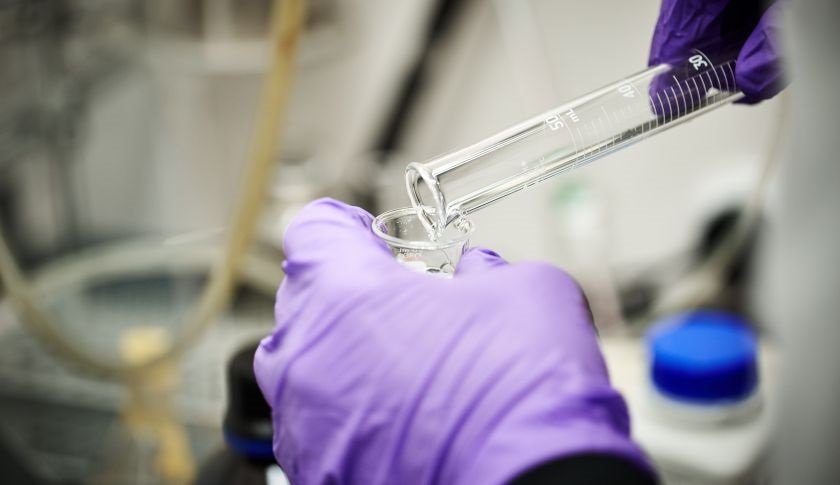Source:
New drugs and smart acquisitions have helped Gilead, Celgene and other pharma giants deliver rapid growth.
The pharmaceutical industry has been rocked in recent years by a confluence of patent expirations of blockbuster drugs, increasing competition from generics and new governmental and industry efforts to control costs the world over.
That’s made growth prospects for many pharma companies a risky and uncertain proposition. Some have pursued growth via innovative (and expensive) new drugs, like Gilead Science’s hepatitis C treatment, Sovaldi, which can cost $84,000 for a full course. Some (see: Actavis) have pursued an aggressive acquisition strategy, buying their way to growth and cutting costs along the way. Others, like Celgene, have opted to strike various alliances with biotechs that have promising products in the pipeline, to hedge their bets over the long-term.
Whichever route a pharma CEO chooses, opportunities to expand sales will likely increase in coming years as the global elderly population grows, chronic diseases become more prevalent, and consumers in emerging markets demand access to modern drugs.
Here are the fastest growing pharma companies in the Fortune 500, based on compounded 5-year revenue growth.
1. Gilead Sciences
Fortune 500 rank: 118
5-year annual sales growth: 28.8%
2014 revenue: $24.9 billion
Thanks to its blockbuster hepatitis C drugs, Sovaldi and Harvoni, Gilead Sciences GILD -0.35% has seen its revenues grow at a compound rate of 28.8% per year over the past five years. The drugs have drawn criticism for their high costs, nearly $1,000 a pill before rebates, but they have proven to be highly effective with fewer side effects than already existing treatments. In the first quarter of this year, about 90,000 patients started treatment on Sovaldi or Harvoni in the U.S. and Europe. Gilead has forecast that sales would grow to between $28 billion and $29 billion in 2015.
2. Celgene
Fortune 500 rank: 369
5-year annual sales growth: 23.3%
2014 revenue: $7.7 billion
Celgene notched 23.3% annualized revenue growth over the past five years, thanks primarily to sales of its cancer treatment Revlimid. Sales of the drug, which was first approved by the U.S. Food and Drug Administration in December 2005, approached $5 billion in 2014, a 16% boost year-over-year. Revlimid received expanded approval this year for newly diagnosed patients with multiple myeloma, broadening the drug’s market. Celgene CELG -0.84% , which has seven approved drugs on the market, also has a robust roster of alliances with early-stage biotech companies, which it’s hoping will bear fruit in the coming years.
3. Biogen
Fortune 500 rank: 298
5-year annual sales growth: 17.3%
2014 revenue: $9.7 billion
Biogen is the world’s largest maker of multiple sclerosis drugs, and one of its latest innovations for the neuro-degenerative disease, Tecfidera, has boosted its revenue growth. Tecfidera is the No. 1 prescribed oral MS therapyin the U.S. and brought in $2.9 billion in sales for the company last year. Despite some recent setbacks, Biogen BIIB -0.56% continues to anticipate that Tecfidera will be the largest contributor to its revenue growth and forecasts that it will net nearly $4.1 billion in sales in 2015, a 41.4% year-over-year gain.
4. Allergan
Fortune 500 rank: 380
5-year annual sales growth: 10%
2014 revenue: $7.2 billion
Over the past five years, Allergan’s revenues have grown at a compound rate of 10% per year. That might have been a huge selling point for the company, which was bought by Actavis ACT 0.00% in March. The combined company, which has revenues of $23 billion, operates in about 100 countries and boasts a stable of top-selling drugs, including Allergan’s wrinkle-fixer Botox. That drug and other neuromodulators developed by Allergan brought in sales of $2.2 billion in 2014. Actavis expects double-digit growth for Allergan again this year.
5. Merck
Fortune 500 rank: 71
5-year annual sales growth: 9%
2014 revenue: $42.2 billion
Thanks to its $41 billion deal to acquire Schering-Plough in 2009, Merck MRK 0.76% saw a huge jump in sales between 2009 and 2011, when revenues grew 75.2%. That’s the primary driver behind Merck’s 5-year growth rate of 9%, placing it as the fifth-fastest growing pharma company in the Fortune 500 over that period. However, the company’s revenue growth has petered out in the past few years due to lagging sales, as some of its flagship products, like asthma treatment Singular, lost patent protections. That left the company fending off tougher competition from cheaper generic copies. New Merck drugs are set to come onto the market, including cancer and hepatitis C treatments, to help reverse the downward trend in sales growth.

